Button at 300: Where are Jenson's first rivals now?
Since Jenson Button first turned a wheel in anger in F1 Racing, 130 drivers have competed in Grand Prix weekends, with varying degrees of success - and staying power. Ahead of the Briton's 300th Grand Prix start in Malaysia, we look back to his very first - and explore what has come to pass for the 21 other drivers who lined up alongside him in Melbourne 16 years ago...
"I was very calm before the start of the race," Jenson Button reflected in the immediate aftermath of his Grand Prix debut. "In fact it frightened me when I realised how calm I was. What was most important was that I proved I've got what it takes for F1…"
As the face of F1 racing changed around him, Button would go on proving his credentials. The Englishman is now a veteran of 17 Formula One seasons, and in Malaysia makes his 300th start - a landmark only two other drivers in history have achieved.
Fifteen wins, 50 podiums and one world championship crown have followed, but Button's career should be measured by far more than just silverware. At the time of his debut he was 20 years, 1 month and 22 days old. In 50 years, only four men had raced at a younger age. In the following 16 years, six have done so. Button helped lay the foundations.
He did likewise in the career path drivers are expected to tread. Promoted into F1 just two years after he was dominating the karting scene, Button was proof of the now popular maxim that if you're good enough, you're old enough. Many saw his appointment as a risk, but since his graduation the likes of Kimi Raikkonen and Max Verstappen have followed suit, stepping up to F1 after a relative handful of races in the junior categories.
Button's longevity, meanwhile, is perhaps best viewed through what has come to pass since Australia 2000. Amidst myriad regulation changes and the arrival, departure or rebranding of more than 20 teams, there have been 130 different drivers to compete in at least one practice session during Button's time in the sport - an average of more than eight new faces a year. To underline that change, we look back at the other drivers to share the Melbourne grid with the Briton on March 12, over 16 years ago...
Mika Hakkinen and David Coulthard - McLaren

After back-to-back championship crowns, Hakkinen won four times in 2000, but would wind up finishing as runner-up to Michael Schumacher in the title fight. He would contest just one more season, before a surprise sabbatical became a full-blown retirement from F1 racing. Three seasons in DTM followed, while his last competitive outing came in 2011 in sportscars.
Coulthard, meanwhile, was a close match for Hakkinen in 2000, winning three times and finishing third overall. He would remain in F1 for another eight seasons, staying with McLaren until a switch to Red Bull in 2005. Like Hakkinen, he competed in DTM as part of a three-year racing swansong. These days he is still to be found in front of the cameras at Grands Prix, as one of F1's most respected TV pundits.
Michael Schumacher and Rubens Barrichello - Ferrari

Schumacher was already a veteran of 126 races by the time Button made his debut - which would coincide with the start of an unprecedented spell of dominance for the German who romped to five consecutive championships. Schumacher would start another 180 races, initially stepping back from the sport in 2006 before returning for three years with Mercedes between 2010 and 2012.
Barrichello had also clocked up more than a century of starts by the time Australia rolled around in 2000. He would go on to make 322, a total which remains unsurpassed - although Button could break the mark should he return and put another full season under his belt. Barrichello would claim 11 wins in that period, two of which came during a four-year spell as Button's team mate, first at Honda and then at Brawn. He left F1 at the end of 2011, but remains an active competitor - now 44, he is currently second in the Brazilian Stock Car championship.
Heinz-Harald Frentzen and Jarno Trulli - Jordan
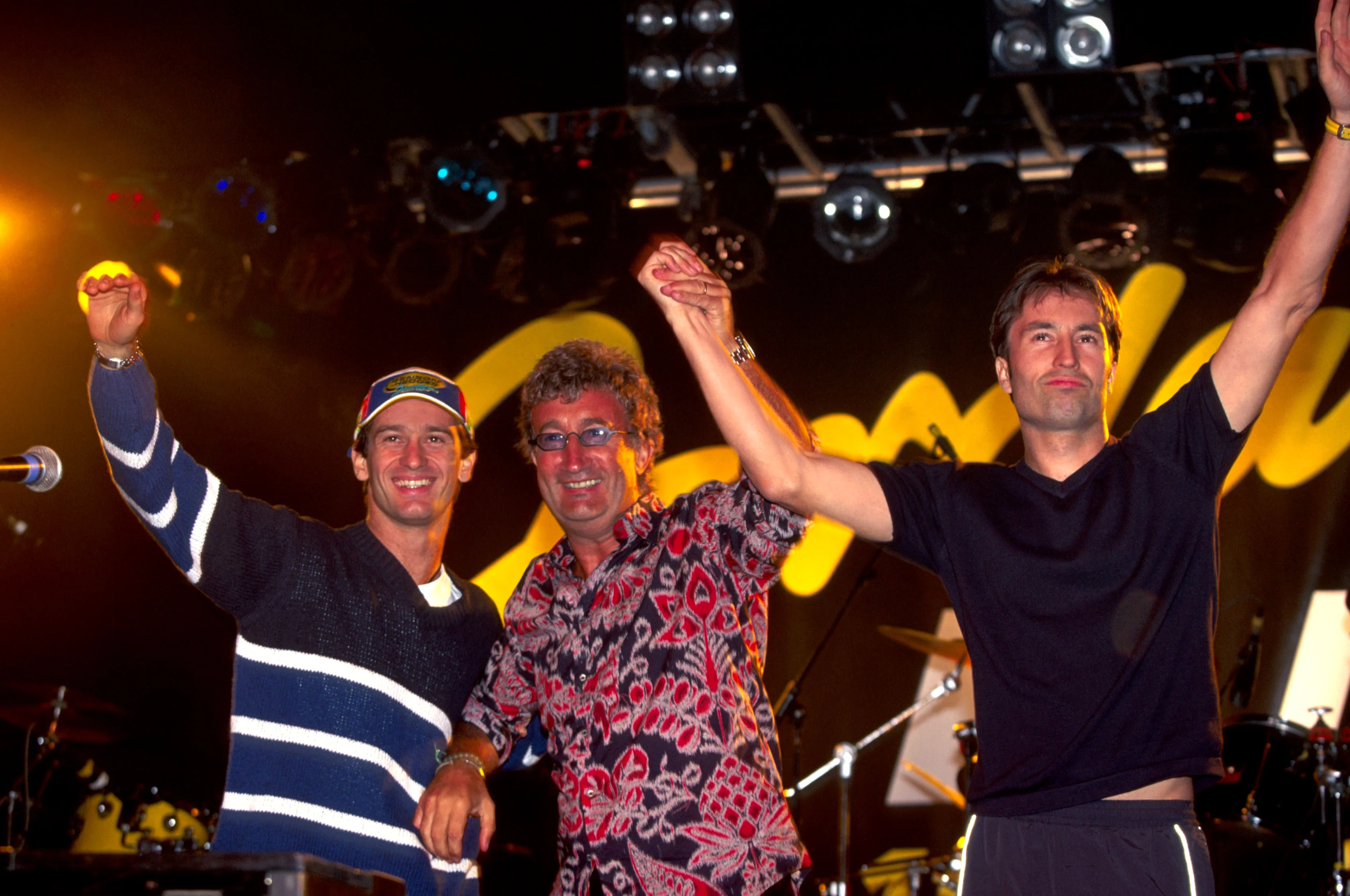
Frentzen's F1 heyday came the year before Button's arrival when he scored two wins and six podiums for Jordan and briefly got himself into the world championship mix. The 2000 season was less successful, although he still claimed rostrums in Brazil and the USA, but the following year he was ditched by Jordan midway through the year, ending up at Prost. He switched to Arrows and then Sauber for 2002, and then retired from F1 at the end of 2003, going on to compete in DTM and various sportscar races, including Le Mans.
Around the same time Frentzen's F1 career was winding down, Trulli's was on the up. A podium with the unfancied Prost team helped earn him a switch to Jordan in 2000, where he impressed with several notable Saturday performances, even if collisions and failures hurt his overall points tally. He stayed in F1 for another 11 seasons, winning a race and earning several podiums as moved from Jordan to Renault, Toyota and eventually Lotus. He remains the last Italian to contest a Grand Prix.
Eddie Irvine and Johnny Herbert - Jaguar
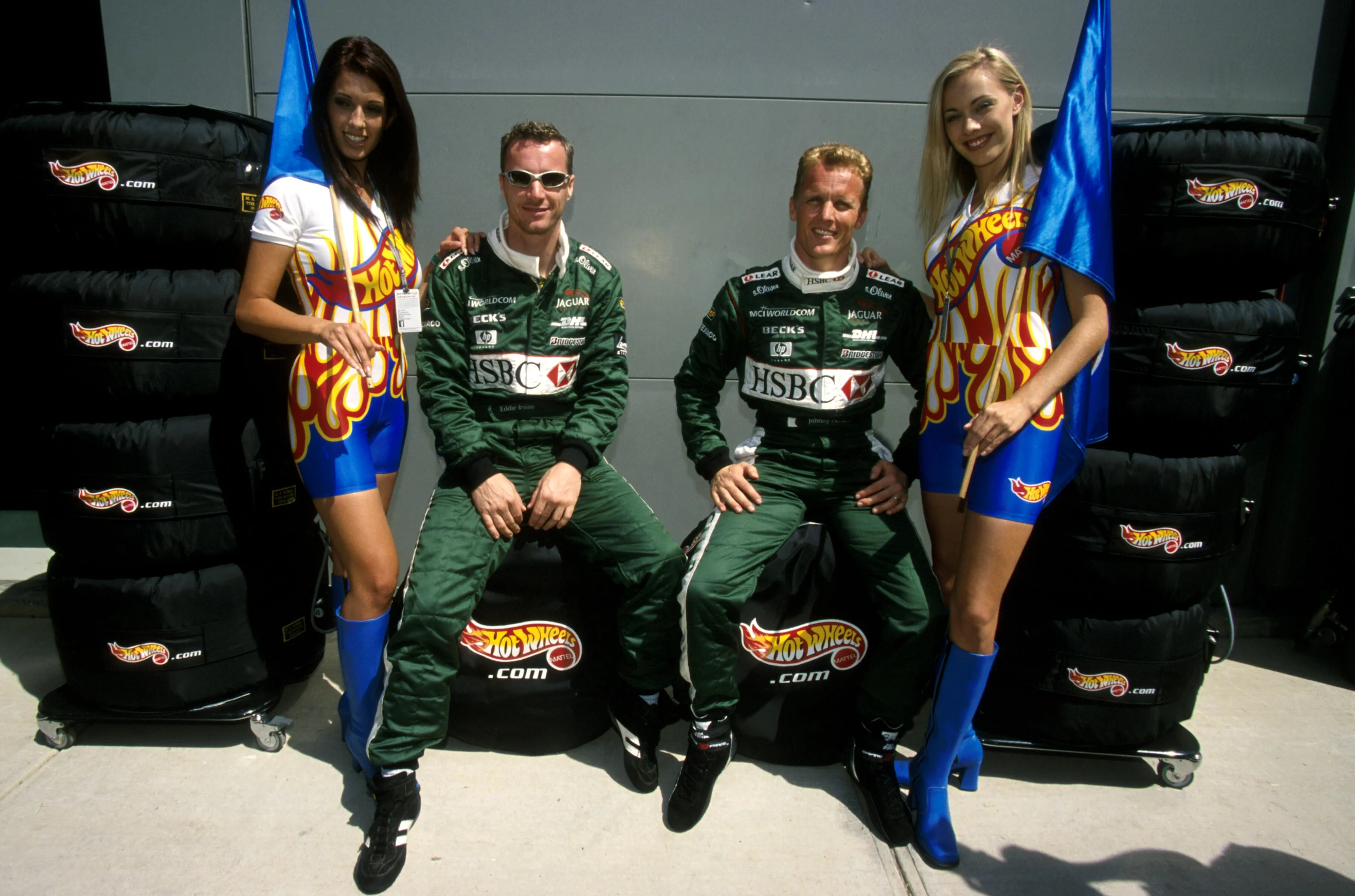
Irvine had challenged for the title in 1999 after nominally taking the lead role at Ferrari when Schumacher broke his leg - but for 2000 he became a de facto team leader with a switch to the newly-coined Jaguar team. It wouldn't prove the happiest marriage: the 2000 season yielded just four points, and while two podiums followed over the next two years, the two parted ways after 2002 - the last time he would race in anything of note.
Herbert's F1 swansong came earlier - indeed 2000 was to be his final season in Formula One racing. It ended with a bang, as a failure pitched him into the walls in Malaysia - Herbert joking afterward that ‘I began my career being carried to the car…I would end it being carried out'. Unlike Irvine, he continued to compete outside F1, racing in a wide variety of championships until eventually hanging up his gloves in 2012. These days he is a pundit for UK F1 broadcasters Sky.
Ralf Schumacher and Jenson Button - Williams
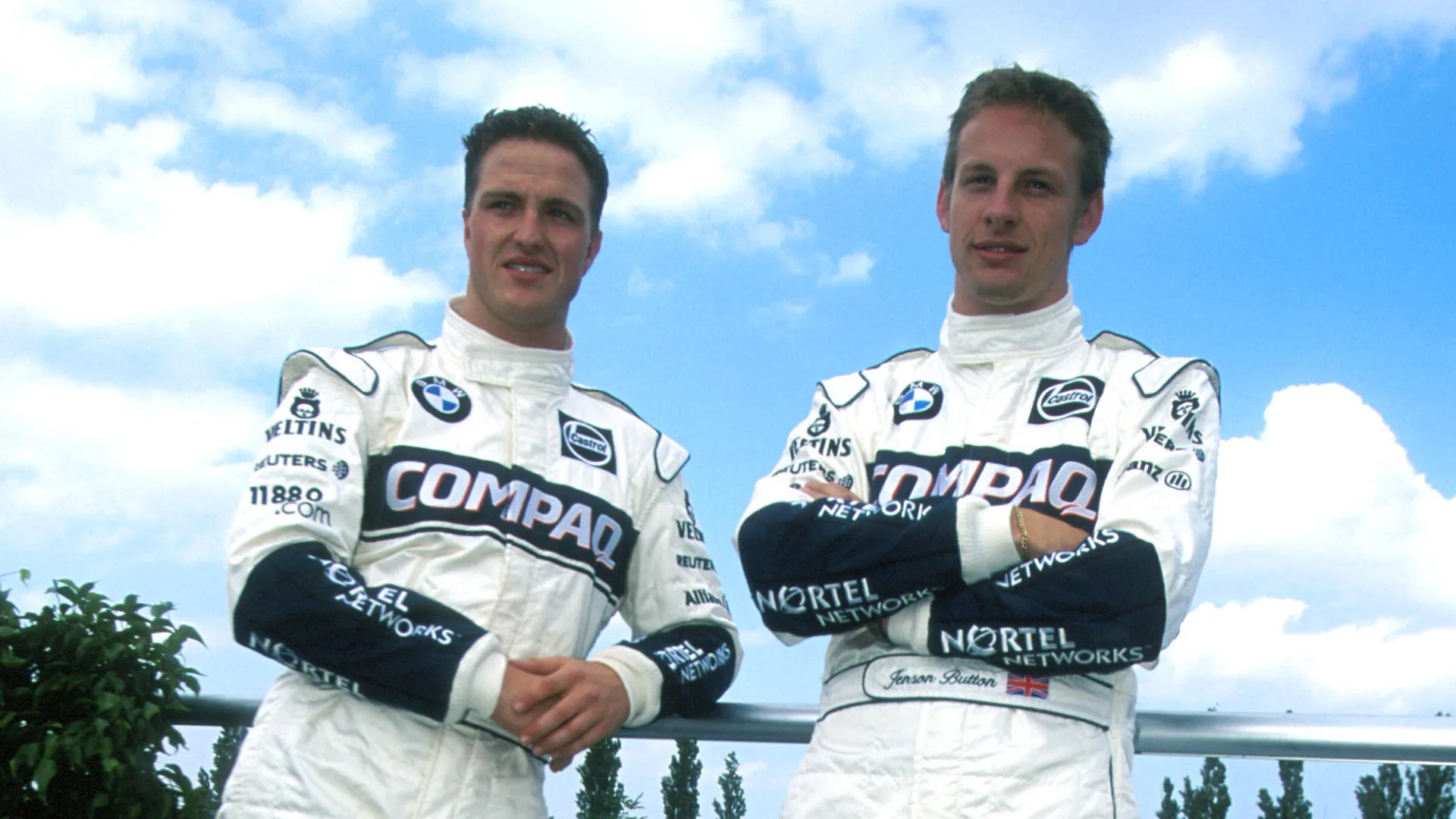
Podiums in each of his first three years in F1 meant the younger Schumacher was an established force by 2000, and he began the season strongly by finishing third in Australia - Button retired while in contention for the top six, having started all the way down the back after a difficult maiden qualifying session. Momentum would swing between the pair as the season progressed, but Schumacher finished three spots ahead of his new team mate, and with double the points - helping him keep his seat for 2001 alongside new recruit Juan Pablo Montoya (Button was ‘loaned' to Benetton). Schumacher would stay with Williams for the next four seasons, winning six races in total. He left F1 at the end of 2007 after a further three years with Toyota, and was mid-way through a five-year spell in DTM when Button won the 2009 F1 crown.
Giancarlo Fisichella and Alexander Wurz - Benetton
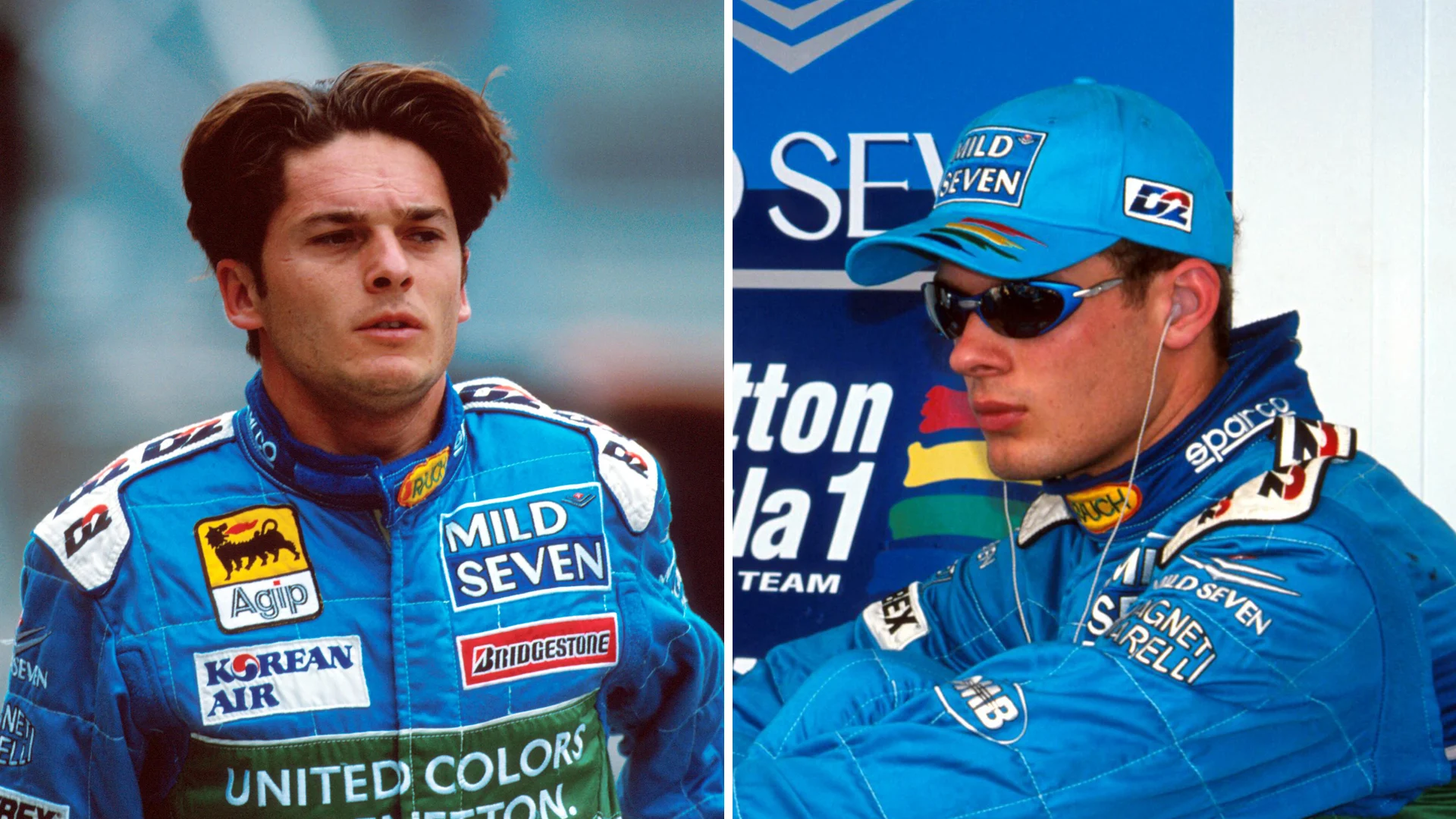
Fisichella's fourth year in F1 racing started in fine fashion, as fifth in Australia was followed up by second - after much ruminating from the stewards - in Brazil. Podiums followed in Monaco and Canada, helping Benetton finish fourth in the constructors' standings. The Italian's career would follow a wandering path thereafter: following moves to Jordan, Sauber, Renault and Force India it eventually culminated in a fairytale five-race finale with Ferrari in 2009. Now 43, the three-time F1 race winner remains active, competing with Ferrari-affiliated teams in the GT classes of the World Endurance Championship.
For Wurz, the 2000 season looked like it might be his last on the F1 grid - having been roundly put in the shade by Fisichella, he joined McLaren as test driver for the next five years. A chance outing arrived in 2005, however, when Wurz stood in for the injured Montoya at San Marino, came home fourth behind Button, and was then promoted to only a second F1 top-three finish when the latter's BAR team were disqualified for being underweight. A switch to Williams eventually led to a final full season in 2007, before the Austrian moved - with great success - into endurance racing.
Jean Alesi and Nick Heidfeld - Prost
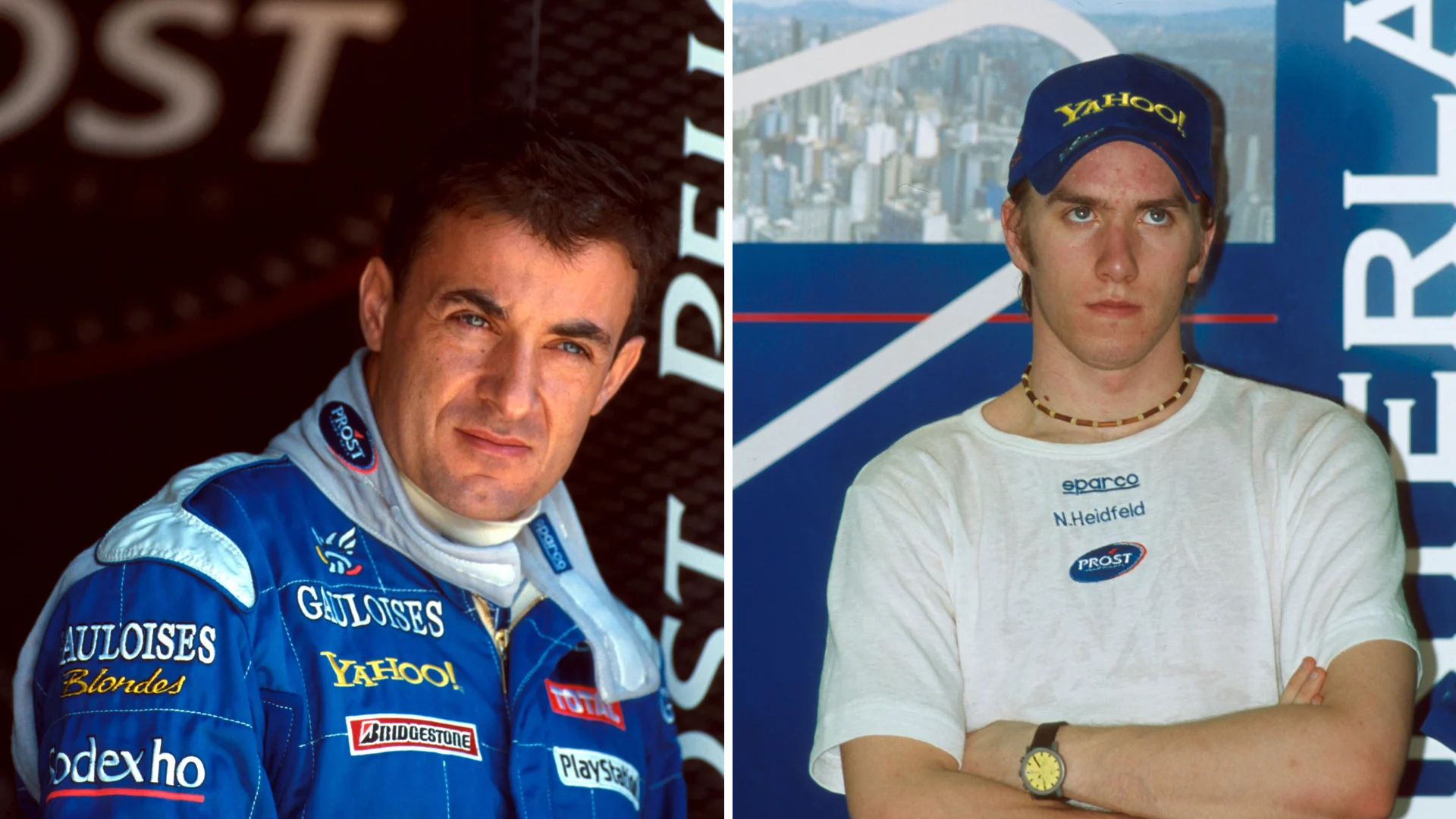
The oldest driver on the grid in Melbourne - at 35 Alesi was Button's senior by 15 years - the ever-popular Frenchman's Grand Prix career was winding down by the time Button's was starting. And 2000 would not be a happy season: having joined Prost, Alesi failed to score any points for the first and only time in 13 years. He subsequently switched to Jordan midway 2001 for what would be his swansong. His career was far from over, however. After five years in DTM, he dabbled with touring car and GT racing, and was competing as recently as 2012, albeit in the form of an unsuccessful bid to take on the Indianapolis 500.
At 22, Heidfeld was the second-youngest driver on the 2000 grid after Button - and he too was making his F1 debut in Australia. Unlike Button, the reigning F3000 champion failed to score a single point in his first year, but was faster than the Brit to a maiden podium, which he picked up the following season in Malaysia after a move to Sauber. By 2008 both men's careers looked similar on paper: 11 podiums to 16, one pole to three, eight races led to 13, all in favour of Button. But as the Briton surged to the title in 2009, Heidfeld found himself at a struggling BMW Sauber team, claiming just one podium. A switch to Lotus-Renault set up his final year in 2011, but his quest for victory eluded him - only one other driver in history has started more Grands Prix without a win. His career did not end there: indeed he is still competing today in sportscars and Formula E.
Pedro Diniz and Mika Salo - Sauber
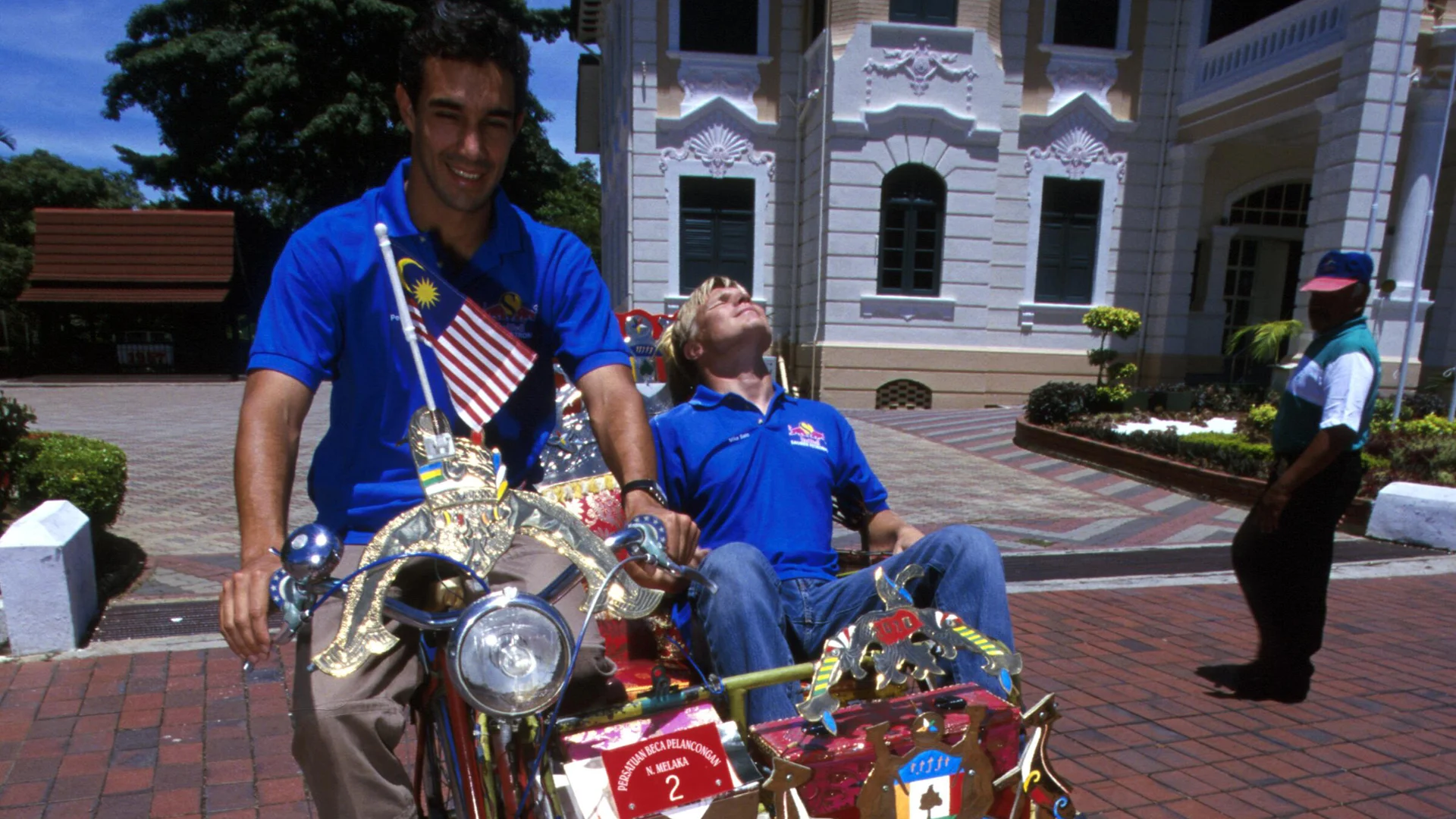
Sauber's withdrawal from Diniz's home race in Brazil, only the second of the season, set the tone for a disappointing year - and one that would prove to be the Sao Paulo racer's last, leaving him just two short of a century of Grand Prix starts. He took a management role at Prost the following season, but as relations broke down he invested his efforts in creating a new racing series in Brazil, and then in business operations in his home country.
Salo's career looked to be on the wane just one year before Button's debut, only for Michael Schumacher's injury to lead to a nine-race spell (and two podiums) with Ferrari. A move to Sauber followed, and while he was able to crack the points with several strong drives, like Diniz he found himself in the cold for 2001. Toyota picked him up for one final campaign in 2002, before he plied his trade in various endurance and GT categories all the way through to 2014, when he won Australia's prestigious Bathurst 12 Hours crown.
Pedro de la Rosa and Jos Verstappen - Arrows
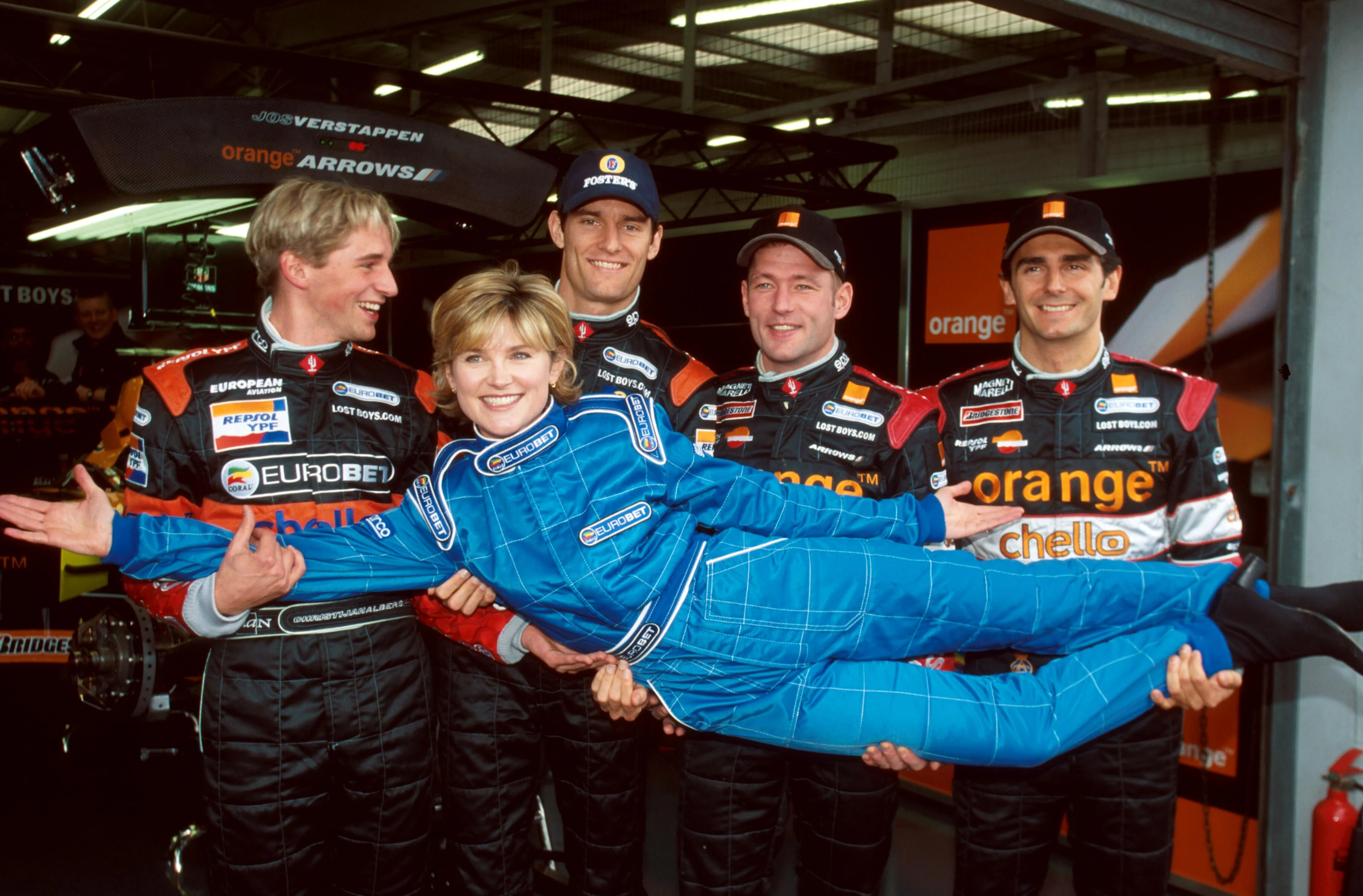
Success in Japan had provided De la Rosa with the platform to move into F1 with Arrows in 1999. He stayed for the following year but was unable to make much of an impact, scoring just two points that season. Spells at Jaguar and McLaren - first as a test driver, then as a replacement for Juan Pablo Montoya - yielded a maiden podium at Hungary in 2006, where he finished second as Button claimed his breakthrough victory. He returned to his role as McLaren tester until Button joined the team for 2010, when De la Rosa switched to a race seat at Sauber, before ending his racing career with HRT in 2012.
Having started 56 races in the Nineties, Verstappen had won his own reprieve from a test driver role in 2000, switching from Jordan to a full-time seat with Arrows. In unreliable yet fast machinery he shone several times, perhaps most notably in Italy. The Dutchman remained with the team in 2001, lost his seat at the 11th hour the following year, and then rounded his career off with Minardi in 2003. If there was a sense of what might have been given his prodigious speed as a youngster, the Verstappen name does at least remain on the grid, albeit in the shape of Jos's son and teenage sensation Max - who was just two years old when Button was making his debut.
Marc Gene and Gaston Mazzacane - Minardi
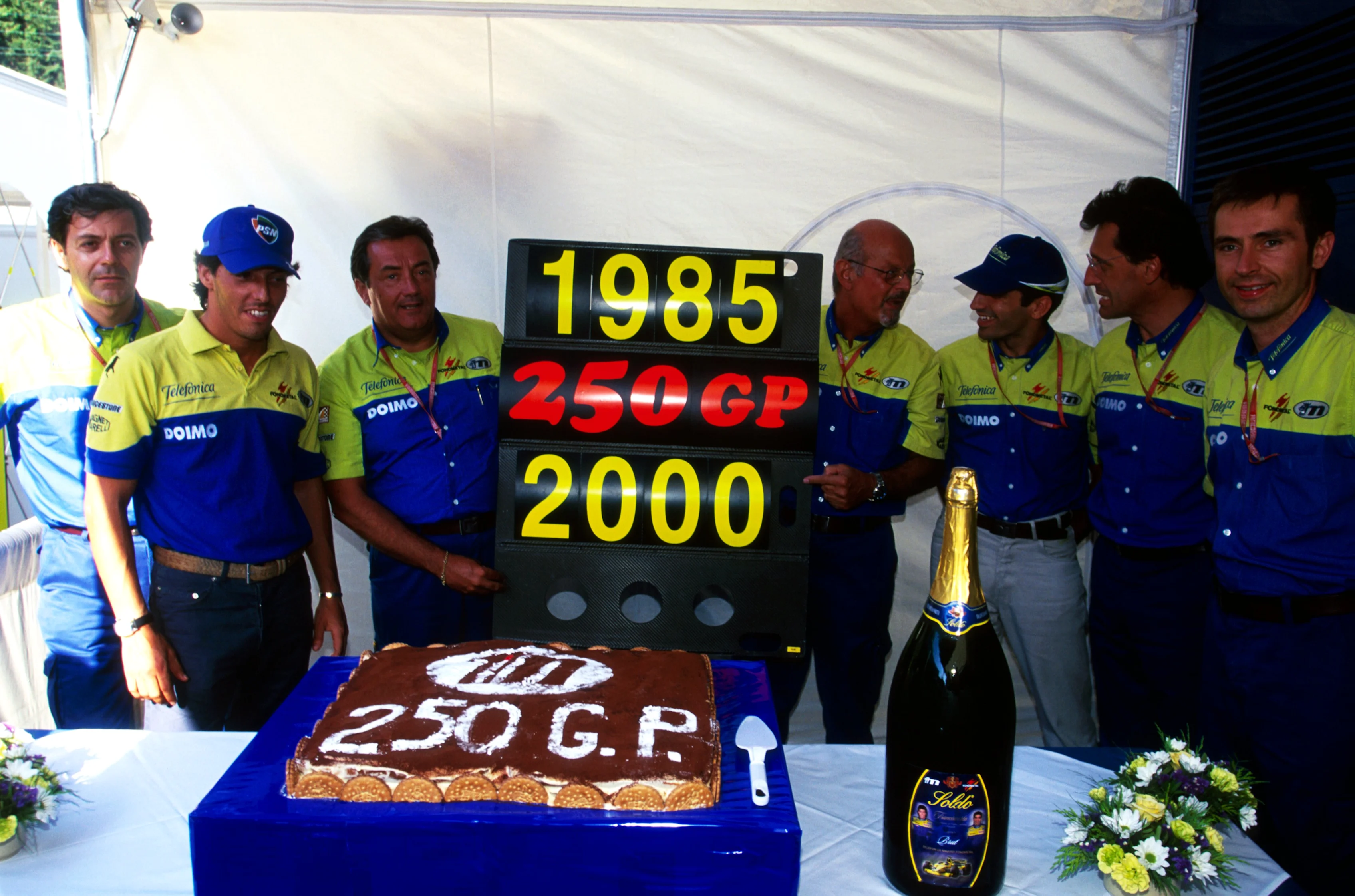
The 2000 campaign would be Gene's second and final full season in F1 - both were spent with the struggling Minardi team, who celebrated their 250th Grand Prix that year. Chance outings with Williams in 2003 and '04 - in place of Ralf Schumacher - took him to 36 F1 starts, nearly one-tenth of Button's current total. Gene's career did not end with F1, however: he competed in sportscars, with great success, up until 2014.
Mazzacane was the third driver, along with Button and Heidfeld, to make their F1 debut in Australia in 2000. The Argentine ended up sharing the back row with Button for that first race, but the similarities in their respective careers end there. Mazzacane saw out the season with Minardi and landed a switch to Prost, but was dropped after four races. While attempts to return were thwarted, he has competed in a handful of events outside F1 in subsequent years, and was most recently in action at Interlagos in August this year in Brazilian GT racing.
Jacques Villeneuve and Ricardo Zonta - BAR
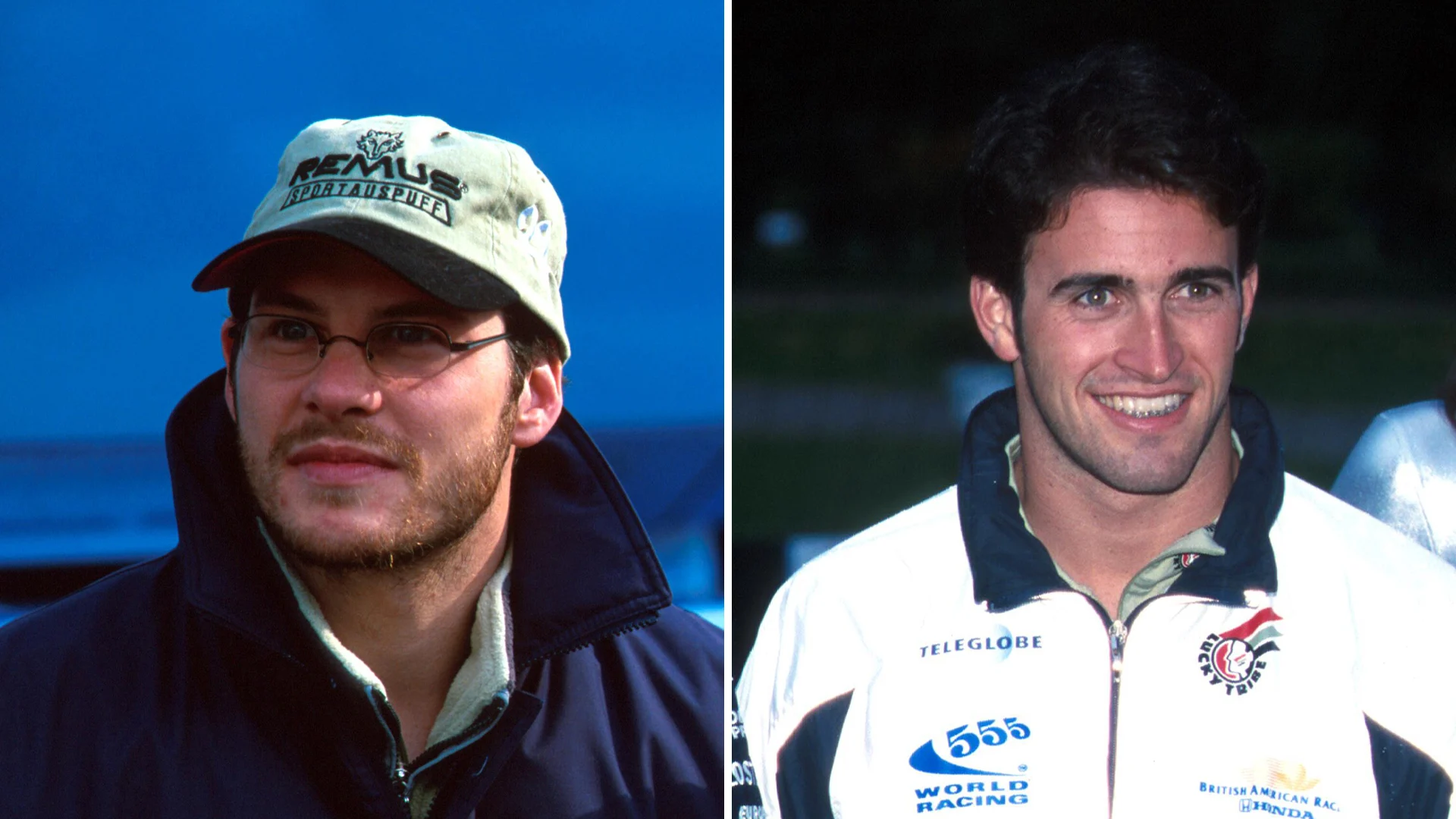
After the high of his first two years - and 1997 title triumph - with Williams, Villeneuve was in the formative stages of a new project with BAR as the 2000 season rolled in. Results proved modest, with the Canadian ending the season seventh, directly ahead of Button. It wasn't the last time the pair crossed paths: in 2003 Button moved into BAR and had the best of the intra-team fight, with Villeneuve switching to Renault the following season. He left F1 at the end of 2006, but stayed competing in various series - particularly in the USA - until recently.
Zonta, meanwhile, profited from Button's late retirement in the 2000 curtain raiser to move into sixth and pick up points at the first opportunity. The Brazilian scored again in Italy and the USA, but was unable to keep hold of a permanent drive thereafter, restricted to two outings for Jordan in 2001 and five races for Toyota in 2004. Now 40, he still competes in Brazilian stock cars.
Next Up
Related Articles
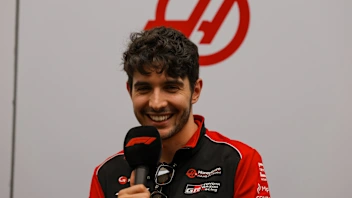 Getting to know the real Esteban Ocon
Getting to know the real Esteban Ocon Piastri 'will be a world champion' in future – Norris
Piastri 'will be a world champion' in future – Norris Norris collects World Championship trophy at FIA Awards
Norris collects World Championship trophy at FIA Awards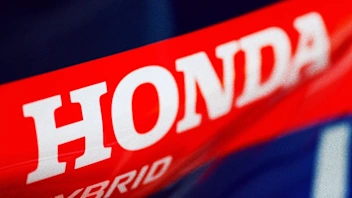 Honda reveal details around power unit launch
Honda reveal details around power unit launch Celebrating the first F1 Allwyn Global Community Awards
Celebrating the first F1 Allwyn Global Community Awards ‘I have achieved my dream, that little boy's dream’ – Norris
‘I have achieved my dream, that little boy's dream’ – Norris